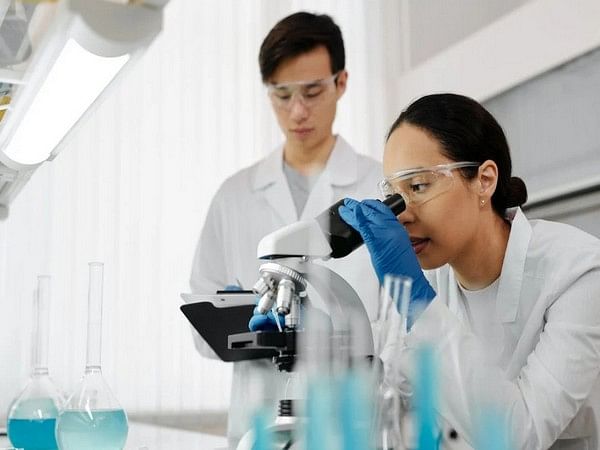Washington [US], May 15 (ANI): Because of its strength, resistance to heat and fire, and low electrical conductivity, asbestos materials were previously widely utilised in homes, buildings, vehicle brakes, and many other construction materials. Unfortunately, asbestos exposure by inhalation of tiny fibre particles has been demonstrated to be extremely carcinogenic.
Now, for the first time, researchers from the University of Pennsylvania have shown that extremophilic bacteria from high-temperature marine environments can be used to reduce asbestos’ toxicity. The research is published in Applied and Environmental Microbiology, a journal of the American Society for Microbiology.
Much of their research has focused on use of the thermophilic bacterium Deferrisoma palaeochoriense to remove iron from asbestos minerals through anaerobic respiration of that iron. “Iron has been identified as a major component driving the toxicity of asbestos minerals and its removal from asbestos minerals has been shown to decrease their toxic properties,” said Ileana Perez-Rodriguez, Ph.D., Assistant Professor of Earth and Environmental Science at the University of Pennsylvania.
D. palaeochoriense has also been shown to mediate transfer of electrical charge within the iron contained in asbestos, without changing its mineral structure. Doing so might enhance asbestos’ electrical conductivity, said Perez-Rodriguez.
Based on this observation, the bacterium could be used to treat asbestos’ toxicity through iron removal. Alternatively, the new properties of electrical conductivity could enable reuse of treated asbestos for that purpose.
As with iron, the fibrous silicate structures of asbestos are also carcinogenic. Removal of silicon and magnesium from asbestos has been shown to disrupt its fibrous structure. The investigators tested the ability of the thermophilic bacterium Thermovibrio ammonificans to remove these elements from asbestos minerals by accumulating silicon in its biomass in a process known as biosilicification.
T. ammonificans accumulated silicon in its biomass when in the presence of “serpentine” asbestos, which has curly fibers, but not while growing in the presence of “amphibole” asbestos, which has straight fibers, said Perez-Rodriguez. This difference, along with the varying amounts and types of elements released during microbe-mineral interactions with different types of asbestos “highlights the difficulty of approaching asbestos treatments as a one-size-fits-all solution, given the unique chemical compositions and crystal structures associated with each asbestos mineral,” Perez-Rodriguez said.
Overall, these experiments promoted the removal of iron, silicon and/or magnesium for the detoxification of asbestos in a superior manner as compared to other biologically mediated detoxification of asbestos, such as via fungi, said Perez-Rodriguez. However, further analysis will be required to optimize asbestos treatments to determine the most practical methods for the detoxification and/or reuse of asbestos as secondary raw materials. (ANI)
This report is auto-generated from ANI news service. ThePrint holds no responsibility for its content.



